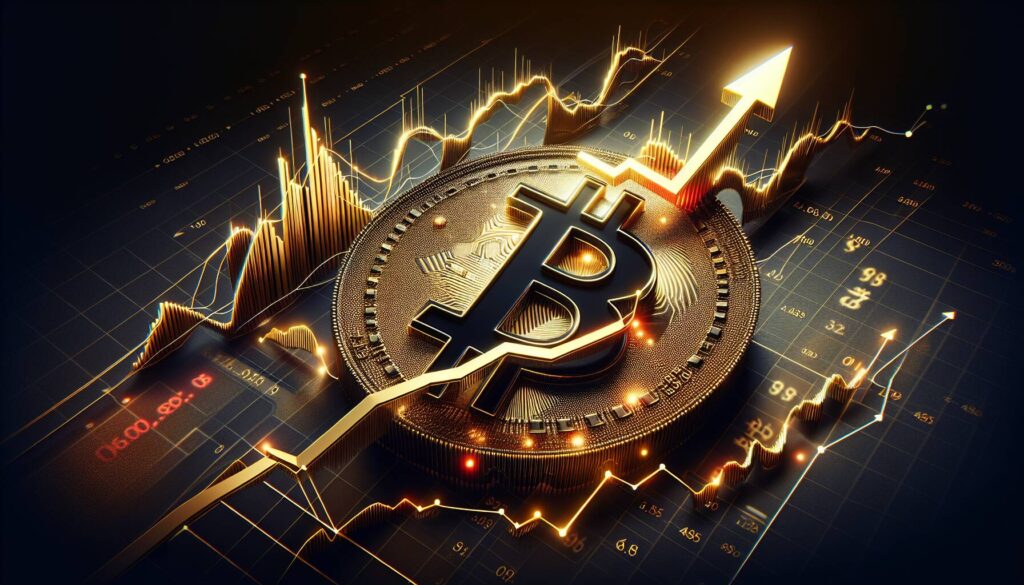In a significant move for the cryptocurrency landscape, former U.S. President Donald Trump recently signed an executive order aimed at creating a digital asset reserve. This reserve will consist of bitcoin (BTC) and various altcoins that have been seized during enforcement actions, but notably, it will not involve any new purchases of these digital currencies. As a result, this reserve currently functions as a strategic stockpile without adding any immediate buying pressure to the market—a factor that has left many traders feeling disappointed.
“The outcomes could significantly influence the regulatory landscape and institutional sentiment toward digital assets,” shares Ryan Lee, chief analyst at Bitget Research.
The reaction from traders has been mixed; many are now turning to short-dated put options on BTC, ether (ETH), and solana (SOL). This indicates a growing concern over potential price declines, especially as demand for these put options has risen. Andrew Melville, a research analyst at Block Scholes, notes that short-term skews for these cryptocurrencies reflect heightened fears of a downturn, despite a resilient sentiment towards XRP.
Attention is now shifting toward an upcoming White House crypto summit, where stakeholders are hopeful for clearer regulatory guidelines affecting digital assets. This event could prove crucial in establishing clarity on tax incentives, token classifications, and enforcement actions, all of which could reshape institutional attitudes toward cryptocurrencies.
“Key market signals to watch include concrete guidelines on securities laws and hints of legislative backing,” added Lee.
Traders are also keeping a close watch on the expected U.S. nonfarm payrolls report, anticipated to reveal an uptick in job creation. Notably, a weaker-than-expected report could lead to renewed optimism regarding Federal Reserve rate cuts, which might bolster interest in risk assets, including cryptocurrencies. However, experts caution that the broader impact of Trump’s tariffs could complicate this outlook, as the Fed may adopt a more reserved approach to monetary policy.
As the digital asset space navigates these pivotal developments, the balance between regulatory clarity and market volatility remains delicate, with many questions still lingering in the wake of Trump’s executive order and the upcoming economic insights.

Executive Order on Digital Asset Reserve and Market Implications
The recent executive order by U.S. President Donald Trump establishes a digital asset reserve that could have significant implications for traders and investors involved in cryptocurrencies. Here are the key points:
- Establishment of a Digital Asset Reserve:
- The reserve will retain seized cryptocurrencies such as bitcoin (BTC), ether (ETH), and solana (SOL) without making new purchases.
- This decision currently prevents any new buying pressure in the cryptocurrency market.
- Market Sentiment:
- Traders express disappointment due to the lack of new asset purchases.
- There is a heightened demand for short-dated put options in BTC, ETH, and SOL, as traders seek protection against potential price declines.
- Impending Crypto Summit:
- The outcome of the upcoming White House crypto summit is anticipated to clarify regulations which could impact institutional sentiment towards digital assets.
- Concrete guidelines on token classification and tax incentives may facilitate increased investment from banks and funds.
- Nonfarm Payrolls Data:
- The U.S. job creation report is expected to influence Fed policy and, consequently, the crypto market.
- Weak payroll data could bolster expectations for Federal Reserve rate cuts, potentially supporting risk assets like BTC.
- Market Volatility and Future Predictions:
- The Federal Reserve’s cautious stance amid inflation concerns may lead to increased market volatility.
- Policymakers may tolerate more volatility before intervening, especially under the current administration.
“The outcomes of regulatory discussions could drive a bullish surge or spark volatility, impacting trader strategies significantly.” – Ryan Lee, Chief Analyst at Bitget Research
Trump’s Digital Asset Reserve: A Game Changer or a Market Disappointment?
The recent executive order signed by U.S. President Donald Trump, aimed at creating a digital asset reserve holding bitcoin and altcoins seized in enforcement actions, has sparked significant debate within the cryptocurrency community. While the initiative could reflect a strategic approach to digital asset management, it notably lacks the momentum of new purchases, leading to mixed reactions among traders and investors.
Competitive Advantage: One potential advantage of this digital asset reserve is the implied legitimacy it offers to cryptocurrencies. Establishing a formal framework could signal to institutional players that the U.S. government is acknowledging digital assets as a valuable component of the financial system. Increased clarity on regulatory practices, especially with a looming crypto summit, might enhance institutional sentiment, potentially attracting more investment into the market. Analysts, like Ryan Lee from Bitget Research, emphasize that clearer regulations could dismantle barriers for banks and funds, leading to a more robust ecosystem for digital assets.
Competitive Disadvantage: However, the absence of active buying, coupled with a lack of concrete guidelines post-executive order, has caused disappointment among traders. The current market sentiment, as highlighted by rising demand for put options on BTC, ETH, and SOL, indicates that many are hedging against potential downturns. The pronounced fears of downside movement may deter short-term traders and investors, possibly creating a market lag. The muted reaction contrasts sharply with the resilient sentiment observed in XRP, indicating that not all cryptocurrencies respond uniformly to regulatory news.
This scenario may present unique challenges for newcomers to the cryptocurrency space or retail investors, as the volatility and uncertainty surrounding regulatory developments can induce considerable apprehension. Without clear guidelines on security classifications or efficient frameworks for taxation, smaller investors may feel overwhelmed and hesitant to engage fully with the market.
Looking ahead, the forthcoming crypto summit, combined with critical U.S. nonfarm payroll data, could prove pivotal. Positive outcomes might bolster trader confidence, but any ambiguity or lack of clear direction could exacerbate existing fears, potentially causing further market instability. With expectations of interest rate cuts swirling, the question of how the Fed will manage inflation under Trump’s administration adds another layer of complexity that could either stabilize or unsettle market dynamics.
In conclusion, while Trump’s digital asset reserve could offer a foothold for legitimizing cryptocurrencies, its initial reception reflects underlying market concerns. The ripple effects of these developments will undoubtedly shape the trading landscape, with some players benefitting from potential regulatory clarity, while others face hurdles in navigating an unpredictable economic environment.
















